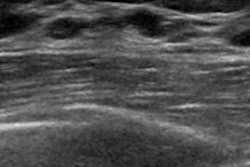
Radiomics offers much potential in radiology, but it must be validated before it can be adopted for clinical use. Unfortunately, the overall scientific quality and reporting of radiomics research is lacking, researchers concluded in an article published online on 26 July in European Radiology.
After reviewing the literature, the South Korean authors found that recently published radiomics studies frequently did not adhere to objective quality measurements for radiomics research.
"Scientific improvements need to be made to feature reproducibility, analysis of clinical utility, and open science categories," wrote the group led by Dr. Ji Eun Park, PhD, of the University of Ulsan College of Medicine in Seoul and Dr. Donghyun Kim of Inje University Busan Paik Hospital in Busan. "Reporting of study objectives, blind assessment, sample size, and missing data is deemed to be necessary."
Barriers to clinical use
Although radiomics research has rapidly expanded in recent years, the field has largely been confined to the academic literature and has yet to find real-world clinical applications, according to the investigators. High-quality science and reporting could enable radiomics to be translated into the clinical domain and used to guide decisions, so the authors sought to evaluate the quality of current radiomics studies via the objective measures of the radiomics quality score (RQS) and the Transparent Reporting of a Multivariable Prediction Model for Individual Prognosis or Diagnosis (TRIPOD).
Using the search terms "radiomics" and "radiogenomics," they queried the PubMed and Embase databases for studies performed in high-impact clinical and imaging journals up until December 2018. They used the items included in the RQS and TRIPOD guidelines to score the 77 articles that met their inclusion criteria. Of these articles, 70 (90.9%) were oncology studies. Imaging journals published 52 of the articles, while clinical journals published 25 articles.
The studies often failed to satisfy many elements of the RQS and TRIPOD guidelines, the researchers found.
| Adherence to objective measurements of radiomics research | |
| Radiomics studies in the literature as of 12/2018 | |
| Mean RQS | 9.4 of a maximum score of 36 (26.1%) |
| Mean adherence to TRIPOD guidelines | 18.5 of 35 items (57.8%) |
Delving further into their results, the researchers found that RQS in the evaluated studies was low in terms of demonstrating clinical utility (19.5%), conducting a test-retest analysis (6.5%), performing a prospective study (3.9%), and providing open science (3.9%). Furthermore, no study included a phantom test or cost-effectiveness analysis. A high level of evidence was also lacking, with further limitations in terms of openness of sharing data and code, according to the authors.
What's more, half of the items deemed necessary in the TRIPOD guidelines were not completely recorded in the radiomics studies. The researchers determined that the adherence rate was especially low in reporting the title (2.6%) and stating the study objective in the abstract (7.8%) and the introduction (16.9%). In addition, the adherence rate wasn't satisfactory in terms of blind assessment of the outcome (14.3%), sample size requirements (6.5%), and missing data (11.7%).
"Our results imply that radiomics studies require significant improvement in both scientific and reporting quality," they wrote.
The researchers also observed that studies in clinical journals scored higher and more frequently utilized external validation than did imaging journals.
Clinical validation
They emphasized that prospective testing of an imaging biomarker in clinical populations is required to achieve clinical validation. To date, only three radiomics research reports included a prospective study and all were in the field of neuro-oncology.
"After biological/clinical validation, the cost-effectiveness of radiomics needs to be studied to ensure that it provides good value for money compared with the other currently available biomarkers," they wrote. "From the current standpoint, the time when radiomics will achieve this end seems far away, and technical and clinical validation is still required."



















